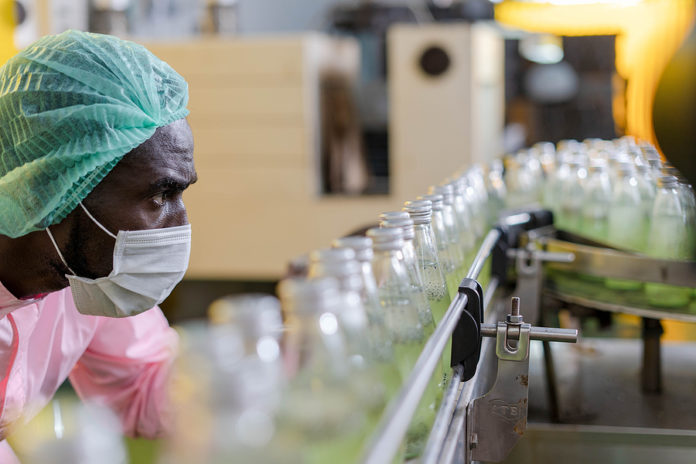
By Erik Kurdelak, Food Scientist, PCQI and WorkForge Food Safety Subject Matter Expert
Key takeaways:
- Reduced oversight raises self-governance stakes: With FDA inspections declining, USDA losing over 15,000 staff, and OSHA facing budget cuts, manufacturers can no longer rely on external audits. Plants must take greater ownership of food safety through internal audits, risk prevention, and proactive monitoring.
- Safety failures now equal brand failures: Recalls and contamination incidents inflict long-term brand damage far beyond financial losses, as consumer trust in food safety hits record lows (only 55% express confidence in the U.S. food supply). Rebuilding trust requires visible, consistent transparency and accountability.
- Modern safety culture is a competitive advantage: Companies that modernize safety protocols, invest in continuous employee training, and foster a culture of vigilance will protect both people and brand reputation — turning safety leadership into a key differentiator in a period of reduced regulatory oversight.
The numbers tell the story. FDA inspections continue to trend down, USDA staffing has been reduced by over 15,000 people, and OSHA is preparing for substantial budget cuts in 2026 that could limit audits and delay responses to reported hazards. Government shutdowns add to the uncertainty, pausing inspections and creating backlogs that take months to clear.
This means fewer opportunities for external oversight, and more responsibility for plants to self-audit, self-correct, and self-govern. The risk isn’t just regulatory — it’s reputational.
When an issue surfaces, the public doesn’t care how many inspections you had. They ask one question: How did you let this happen?
Recalls and safety failures are brand and bottom-line threats
Every recall or safety incident reverberates far beyond the plant floor. It not only drains resources but also erodes the very foundation of trust your brand depends on.
Recalls can cost businesses millions, from scrapping product and logistics to legal liabilities, testing, and production disruption. But the real danger lies in what those dollars can’t capture: your brand reputation. Lost contracts, shaken retailer and supplier relationships, and ever-worsening consumer skepticism are far more insidious — and harder to reverse.
In recent contamination events involving ready-to-eat pasta products, millions of pounds of food were pulled from distribution across multiple states. These recalls don’t just halt operations for a moment — they rewrite public perception. When an incident becomes a headline, the lingering question isn’t “Did they fix it?” but “Can we trust anything from them again?”
Consumer confidence in the U.S. food system is hitting historic lows, which will only amplify the brand damage a recall or safety incident will cause. According to the 2025 IFIC Food & Health Survey, only 55% of Americans say they are “very or somewhat confident” in the safety of the U.S. food supply — down from 62% in 2024 and 70% in 2023. Only 11% report being “very confident.”
What’s driving that distrust? Among respondents who expressed low confidence:
- 59% believe profit is prioritized over safety
- 54% feel the food system lacks coordination
- 46% think government regulation is too weak
- 43% say there are simply too many recalls for the system to be considered safe
These figures are more than consumer sentiment — they’re alarm bells. Once trust is damaged, it’s not restored by corrective action alone. Rebuilding credibility demands sustained transparency, consistent performance, and visible proof of care over time.
Because while financial losses can be managed, brand impact is far more damaging. A single misstep can overshadow decades of good work, discourage top talent from joining your team, and make every future product launch start with a doubt — from customers, retailers, and regulators alike.
Now is the time to re-evaluate, retrain, and reinforce
The reality is that food manufacturing has changed faster than most manufacturers’ safety programs have evolved. Automation, ingredient sourcing complexity, labor turnover, and production speed all introduce new variables — and new vulnerabilities. Meanwhile, regulatory agencies face staff reductions and resource strain, meaning fewer eyes on your operations and longer response times when issues arise.
That means your internal systems must now do more than what external oversight used to — detect, prevent, and contain risks before they reach the public. Reevaluating your safety protocols isn’t just a best practice; it’s a brand survival strategy.
How to do it
Reinforcing your safety culture and processes requires deliberate action across three core pillars: processes, people, and prevention.
- Strengthen and modernize your protocols
- Audit beyond compliance. Conduct full-spectrum internal audits that test not only regulatory checkboxes but also the human and process elements behind them.
- Simulate recall and incident responses. Run real-time drills that test your traceability, containment, and communication systems. A 30-minute delay in a real scenario could mean millions in lost products.
- Leverage technology. Integrate digital learning systems, automated monitoring, and real-time reporting tools to catch deviations faster and ensure accountability across shifts.
- Invest in continuous training
- Go beyond “once and done.” Annual training refreshers aren’t enough in a high-turnover and high-risk environment. Training should be continuous, accessible, and adaptive — especially for newer employees who may not have prior food manufacturing experience.
- Teach the “why.” Employees who understand why procedures matter are more likely to follow them, identify risks early, and prevent issues.
- Empower through learning and development. When workers see training as a pathway to advancement, it not only strengthens safety outcomes but also improves retention and morale.
- Build a culture of vigilance
- Create psychological safety. Employees must feel confident and safe to stop a line or report a concern without fear of injury, blame or retribution.
- Celebrate prevention, not just production. Recognize teams that identify hazards early or improve safety processes — and make that recognition visible.
- Lead from the top. Safety culture starts with leadership modeling the behaviors they expect such as wearing PPE, asking safety questions, showing up on the floor, and reinforcing that safety is part of productivity.
The result: A brand that inspires confidence
When safety protocols are modernized, training is continuous, and vigilance becomes second nature, you don’t just reduce incidents — you strengthen your entire brand ecosystem. Employees take pride in their work, consumers gain confidence in your products, and retailers view you as a trusted partner in reliability and responsibility.
Reevaluating safety is no longer a defensive move — it’s an offensive strategy for brand protection, operational stability, and workforce loyalty. The companies that act now will be the ones that thrive, even as oversight fluctuates and consumer scrutiny intensifies.
When oversight wavers, taking ownership of safety isn’t optional — it’s a competitive advantage. Strong safety culture and consistent training protect your people, strengthen your brand, and prevent costly recalls before they happen. The return is measurable in fewer incidents, higher retention, and greater consumer confidence. Companies known for safety aren’t just trusted — they’re where people want to work, and where customers want to buy. Owning safety protects your bottom line, your reputation, and your future.
 Erik has devoted over 25 years to learning, applying, teaching, and consulting on the principles of food science. He regularly develops and provides technical training at food industry events and has done extensive work with Purdue University Food Science. In addition to serving as the State of Indiana’s Subject Matter Expert for Food Protection Division | Special Processes, Erik is also a Founding Board Member of The Central Indiana Food Hub & Sustainability Center, an Indiana Non-profit Organization in early stages of development.
Erik has devoted over 25 years to learning, applying, teaching, and consulting on the principles of food science. He regularly develops and provides technical training at food industry events and has done extensive work with Purdue University Food Science. In addition to serving as the State of Indiana’s Subject Matter Expert for Food Protection Division | Special Processes, Erik is also a Founding Board Member of The Central Indiana Food Hub & Sustainability Center, an Indiana Non-profit Organization in early stages of development.
Credit: Source link













